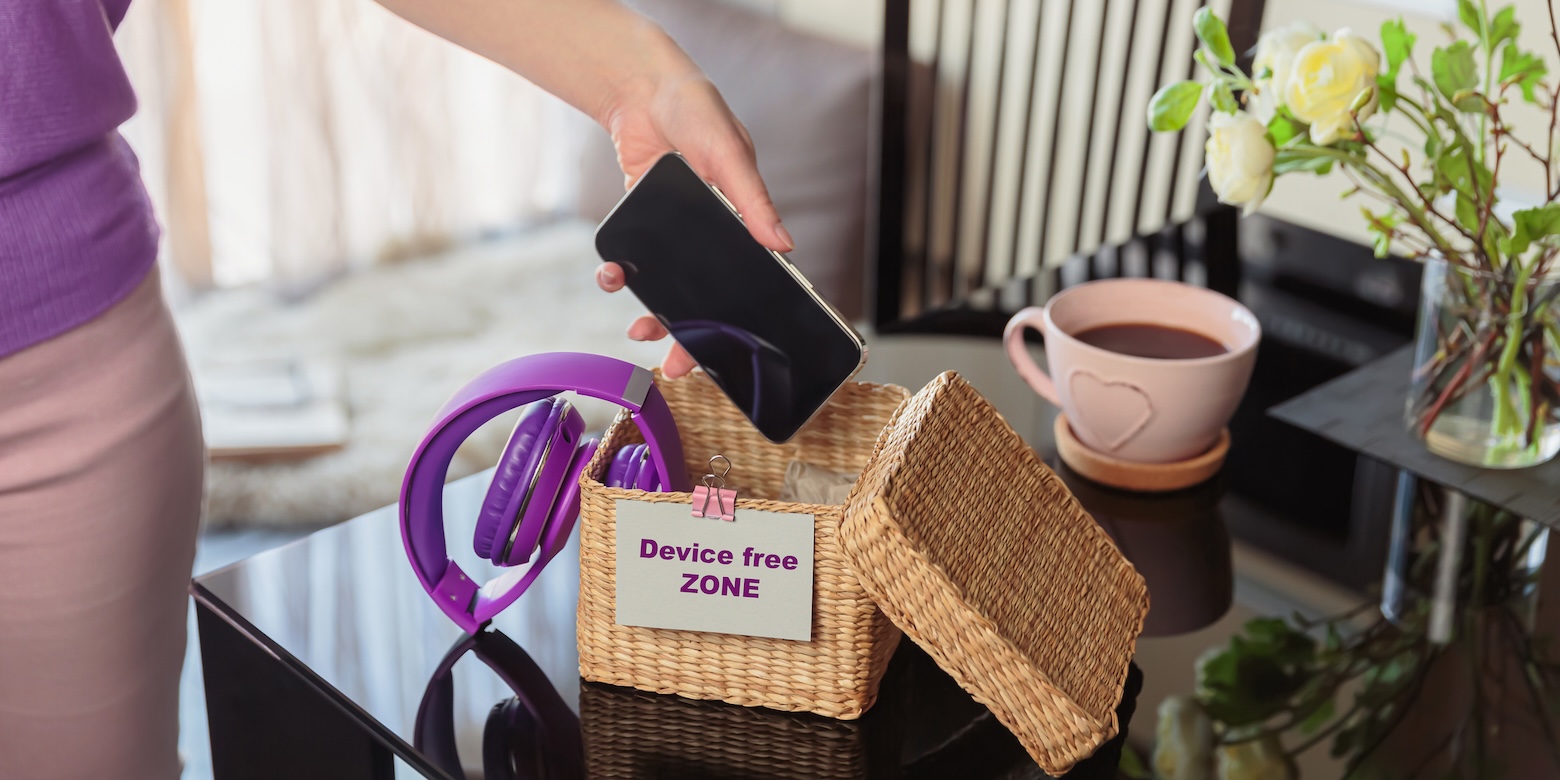In a world of constant connectivity, our screens often feel like extensions of ourselves. They keep us informed, entertained and in touch, but they can also quietly chip away at our focus, energy and emotional well-being.
Setting boundaries around screen time has become more than just a wellness trend. It’s a valuable way to protect your mental well-being and reclaim time for what truly matters.
Here’s how to take small, sustainable steps to set screen time boundaries that actually stick and why it’s worth the effort.
Start small and purposeful
Cutting back on screen time starts with small, mindful changes. “Rather than making sweeping resolutions, try starting with a short window of time each day to step away from your phone or computer,” said Joseph O’Brien, M.B.E., M.S.W., L.C.S.W., manager of mental health outpatient services at Inspira Health. “Even a 30-minute break during lunch or the hour before bed can create noticeable shifts in how you feel.”
One approach for staying consistent is to pair screen-free time with an intentional activity. Whether it’s taking a walk, reading, journaling or practicing mindfulness, the key is to make the moment feel like a choice rather than a restriction. Over time, these breaks can restore focus and help you use your time more purposefully. You may notice subtle but rewarding changes, like improved energy levels or more meaningful face-to-face interactions.
Use technology to help you unplug
It may seem counterintuitive, but your device can actually support your digital detox. Most phones have built-in features designed to help you monitor and manage screen time. Setting daily limits for social media apps, turning on focus modes or scheduling device downtime can gently remind you to unplug. You can also switch your screen to grayscale during off-hours, making it less visually appealing and easier to put down.
Creating physical boundaries helps, too. Setting up a charging station outside the bedroom, for example, encourages a more restful nighttime routine and reduces the temptation to scroll right before sleep. These strategies can make it easier to follow through on your goals.
Communicate your boundaries clearly and kindly
Communicate your screen time boundaries to the people around you. This helps you set expectations in a way that protects your well-being while maintaining connection. Let others know when you’re generally available to respond to messages, and offer alternative ways to stay in touch if needed.
Setting boundaries can feel uncomfortable initially, especially if you're used to being always reachable. But when you approach the conversation with warmth and honesty, most people will respect your efforts and may feel inspired to do the same.
Make it easier to stick with your plan
One way to stay accountable to your screen time boundaries is to track your progress. Your phone’s screen time reports can show you how much time you spend on your device and how that time changes from week to week.
“To stay consistent with your screen time boundaries, consider setting up small cues in your environment that support your goals,” said O’Brien. “Keeping your phone out of reach during focused activities or setting visual reminders, like a book on your nightstand, can help you stay present without needing willpower alone.”
You may also need to adjust your boundaries as your routine or needs change. What matters most is sticking to the core principle of being intentional about how and when you use your screens. Don’t forget to celebrate the small wins, either: each moment you spend fully present is progress worth recognizing.
Shift the mindset: This is a positive choice
While setting limits on screen time might feel strange at first, especially in a culture that values constant availability, it’s a meaningful way to care for your mental and emotional health. Think of your screen time boundaries as an act of self-respect, not self-denial. You're choosing to be more present, focused and connected to your life.
“Over time, you may find that you sleep better, feel less overwhelmed and engage more fully in your relationships,” said O’Brien. Setting screen time boundaries is not about perfection. It's okay if you slip up. Boundaries are a practice, not a performance, and every step you take toward being more intentional counts.
Learn more about behavioral and mental health services at Inspira Health.
